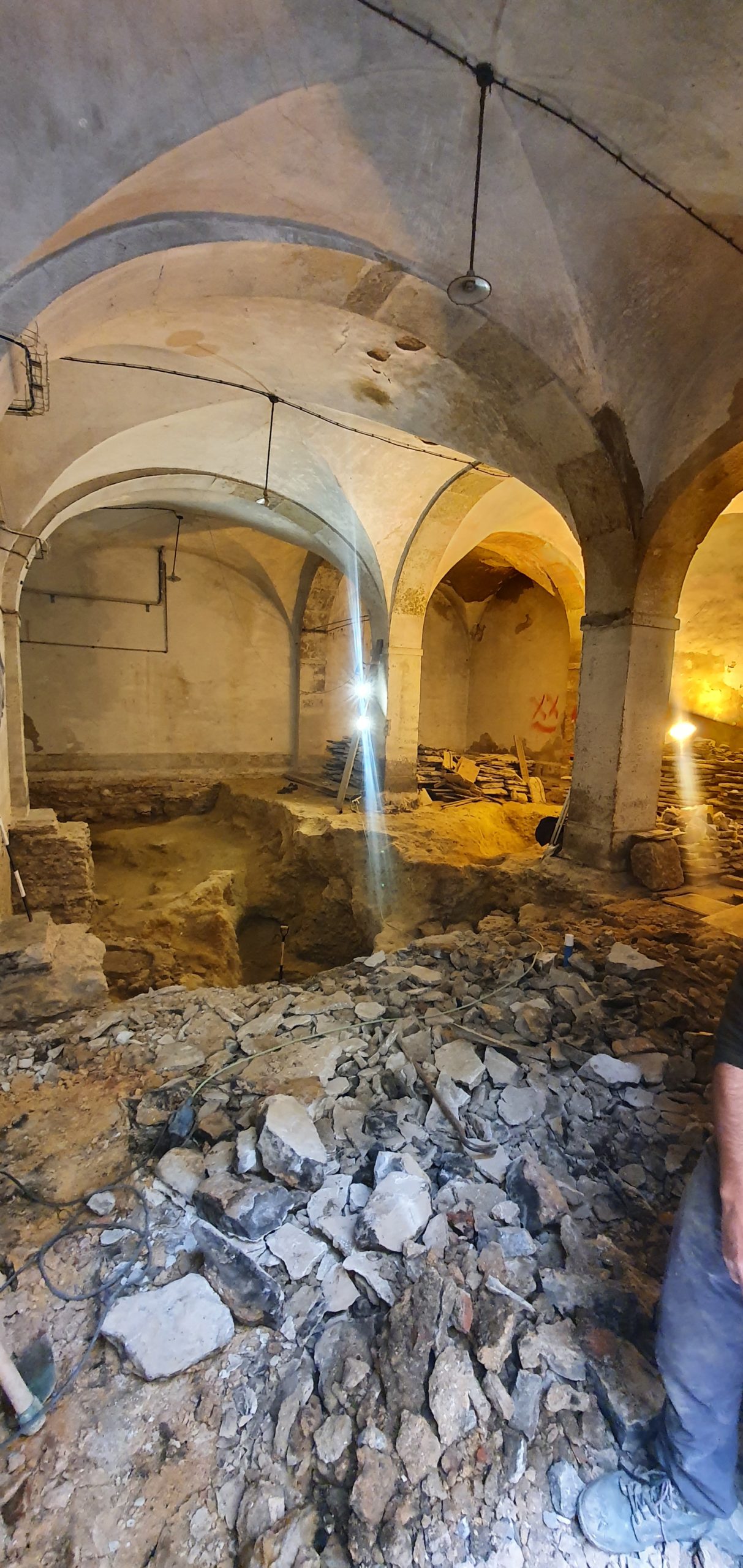
On the verge of the magnificent Tegus river, our neighbourhoods were once nestled behind a defensive wall. Castelo, Sé, Alfama and Baixa are defined as the oldest settlements in this historic city, once home to civilizations from the Roman, Islamic and Medieval periods and witnesses to the constant movement up and down the river, in and out into the Atlantic ocean which bought the commercial exchanges taking place on the river’s edge.
It has been a month now that we have been clocking truckloads of ocre coloured earth being loaded onto the back of a flatbed truck to be carted away. Today we walked a few yards into a no exit alleyway to find the dig which is taking place in a commanding cavern locked behind old, bottle green wooden padlocked doors, the ground floor of a 16th-century building that amazingly survived the terrible earthquake and tsunami of 1755. Here we met the archaeologist, young at 23, softly spoken with a masters degree and in charge of translating the unearthed “constructions” into their historical perspectives. It has been a week since his work began, he regrets that they will not have the luxury of time to dig deeper where he expects they would uncover more of the remains. To date, what has been uncovered is not quite as spectacular in their uniqueness as some neighbouring sites. It is the responsibility of the owner to pay for the archaeological excavations which by law are required when any building in the ancient area is labelled for “renovation”. This will often mean, due to financial considerations, that the dig is, unfortunately, “hurried along” and the scope of the excavation becomes rather limited. I am told the building has been bought by a French national and I am also of the understanding that it is often the non-Portuguese owners that show more interest and tolerance to these excavations and subsequent exciting discoveries that add to our understanding of days gone by.